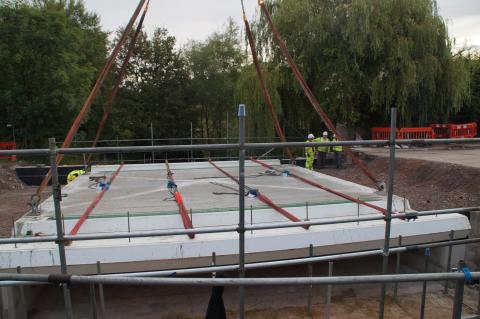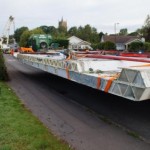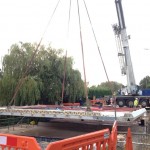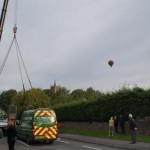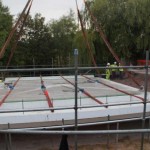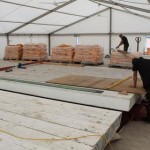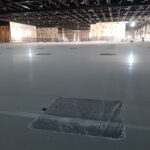Last week, a fibre reinforced polymer (FRP) bridge was installed over the River Frome at Frampton Cotterell near Bristol.
Local authority client South Gloucestershire Council was sold on the idea by its consultant Atkins, liking the offsite construction, speed of installation, and whole life cost benefits.
But if it’s such a good idea, how come the number of FRP bridges in the UK barely reaches double figures, despite the technology having existed for a couple of decades?
“FRP bridges are so lightweight, they are easy to transport to remote locations, and can be brought in by helicopter”
Atkins group engineer James Henderson believes it is an “exciting time” for FRP technology in construction, but thinks there are barriers to its wider adoption in this country.
“Firstly, there is familiarity,” he says. “Everyone knows concrete and steel. There is a level of retraining required at site level, because there is a slightly different method of connecting an FRP bridge deck.
“So it’s a challenge for the supply chain, which is why small, simple jobs like the Frampton Cotterell bridge are the way to start.”
Atkins developed the design for the bridge at Frampton Cotterell with South Gloucestershire Council and designer-manufacturer CTS Bridges.
It was prefabricated at the nearby National Composites Centre in Emersons Green, Bristol, and transported to site by lorry.
The six week project finished earlier this week and full completion is due in November.
Henderson says the project has been a great success, but the potential of the technology needs to be better understood. Recent advances in FRP technology driven partly by developments in wind turbines mean that much larger scale composite structures are now possible, he explains.
“The European Union has been quicker on the uptake, and Scandinavia is very keen,” he says. “Because FRP bridges are so lightweight, they are easy to transport to remote locations, and can be brought in by helicopter.”
Henderson thinks whole life cost benefits are the technology’s biggest selling point. Atkins has calculated how FRP compares to concrete and steel bridges when costs such as maintenance are considered.
“These are subjective estimates,” he says, “which we produced for the Frampton Cotterell project. “But, if anything, we erred on the side of caution – putting costs for maintenance on composite bridges on the high side, and construction costs for concrete and steel on the low side.”
However, few clients think like South Gloucestershire, says Henderson.
“The recent focus has been on upfront costs due to the recession. The Highways Agency has dipped its toe in, but no more than that.
“To make a real difference, we would need to see a big push on standards from clients like the Highways Agency and Network Rail. At the moment, there are no standards for composite structures; the existing standards are very open to interpretation, and wouldn’t give confidence to a civils designer.”
If the construction supply chain doesn’t pick up the baton, Henderson speculates that other players may end up taking advantage of the market.
“There is a very talented composite structures supply chain in sectors like aerospace, energy, and automotive,” he points out. “It could push into construction; it’s just a question of a different mould. One of the beauties of composites is that you can create any shape you want.”
Fonte: National Composites Center


